From trademarks to marketing, we take a look into how to navigate the cannabis industry.
State of Social (August 2019)
4 Things to Know About the Facebook Top Fans Badge
State of Social (July 2019)
State of Social (June 2019)
Beyond Your Listings: A 5-Step Guide to Yelp Success
3 Tips for Running a Successful Instagram Takeover
Promoting Events: A Recent Case Study
Cheers to Winter!
It's time to cozy up to a winter beer. Currently pitching seasonal beer releases to media across the country. It never hurts when the journalist want to come and meet with the brewmaster for a glass or two.* PR Tip: Always try to offer an experience (in this case come meet with the brewmaster) to set yourself apart from the others. Media may not take you up on it but nine times out of ten the offer is appreciated.
Pitching for Facebook Posts
There's no denying the media landscape is in flux, but as journalists figure out the best way to leverage social media, so must PR professionals. From pitching media via tweets, as opposed to email or phone, to sharing media hits on brand Facebook pages, PR professionals are changing how they go about their daily tasks. But yesterday's interaction with a journalist, was a first for me. When I sent off a pitch for a new beer release to a drinks reporter at a Las Vegas Magazine she requested a photo and informed me that the beer would be featured as the "5 o'clock drink of the day" post on the Magazine's Facebook page. It was the first time I had pitched a journalist where the content was being used strictly to fill the Facebook newsfeed, and while it may not have made the glossy pages of the magazine I was still pleased. Here's why:- More fans: The magazine's Facebook page has close to 20K fans. Not nearly as many as the print subscription, but it was ten times that of my client's Las Vegas Facebook page. People still flock to traditional media on social media as traditional media pumps out quality content.
- Timeliness - The beer is being released in a few days. I would have never made the print deadline but in this case I was able to get in front of people in a timely manner via Facebook.
- 3rd party endorsement. Sure I posted about the beer release on the client's Facebook page, but there I'm most likely reaching current customers. The Magazine's Facebook page could potentially drive new customers.
Who knows...one day in the very near future, PR professionals may be battling it out to secure placements in the newsfeed of media's social pages versus the news pages of a publication. At the end of the day, the important thing is the message gets to the right audience at the right time.
Susan G. Komen's PR Blunder - Top 5 Mistakes Made
Abortion is an extremely polarizing topic and I try to keep my personal views separate from my work, but I would like to talk about how Susan G. Komen handled the recent pulling of funds from Planned Parenthood from a PR and social media perspective. I think there are lessons here, whether you are a pro-lifer or pro-choicer, on what not to do. Looking at the coverage and social media chatter, from a public perception stand point Susan G. Komen got slammed over the last few days for how they handled this piece of news.So here it goes...The Top 5 Mistakes Susan G Komen Made
1. Silence
Susan G Komen had no official press response put out to media aside from "No Comment." So what happened when USA Today, New York Times and others couldn't get a comment? They went to the organization's Facebook page and lifted a post from the page. It wasn't a poorly written post by any means, but if you are going to speak up in one space why not offer up the same comment to the media. The two boundaries are blurred now. What you say in social can easily end up on the front of the New York Times. Be prepared for that and think twice when you hand over your Facebook page to your intern to run.
2. Transparency
Whether this was true or not, people on Facebook were accusing Susan G. Komen of deleting Facebook posts. On one hand it didn't really matter because the negative posts kept flooding in, but it was clear that the organization did not have a crisis plan in place. They should have anticipated, staffed up and had a library of responses or well-crafted posts to state their position clearly and explain to people that they are pulling funding from one source and putting it in another to assist low-income women. Goes back to Point 1 though, Susan G. Komen opted to remain silent for the most part.
3. Planning
You had to scratch your head and think..."Didn't they see this coming?" There did not seem to be any statements in place or any alternative plans - well we are pulling funding from Planned Parenthood but in its place we are giving funding in those same cities to provide breast screenings for low-income women. To make a move like this, Susan G. Komen should have gotten out ahead of the announcement and begin talking to fans and media about their efforts with low-income women that extend beyond Planned Parenthood.
4. Solidarity
In the midst of their silence there was one person who spoke on the record. Yep, it was the president of the Susan G. Komen Connecticut affiliate who was pretty vocal about the fact her local office didn't support the national position. It really would have been in the organization's best interest to make sure everyone was on the same page and that their affiliates were armed with talking points prior to this news coming out.
5. Anticipating Weakness
Whether there was an underlying political agenda or they simply felt funding an organization under investigation was wrong, they should have "thought" like the opposition. Did they not think people would dig up info on Karen Handel? True or not, public perception is powerful and you need to prepare for whatever backlash there may be. I would try to poke holes in my own story, find my weaknesses and make sure I have ammunition and facts to back up my stance.
No one's perfect, mistakes happen and we don't have to dwell on this forever. (Knowing people's attention spans this will be over by next week). But it is always good to learn. In today's world, transparency is key. If you think your decision will upset some people, it probably will, and you'll probably hear about it. You can't make everyone happy, but you can put yourself in the best position possible through planning and anticipating, which wasn't what happened in this case.
One Solution to Saving the Media Industry
As a PR professional, I'm always interested in what is going on in the media world. Not surprising, print subscriptions are down, newsrooms continue to cut staff, and media companies seem to be scrambling to come up with some new technology that will save the industry. The New York Times tested their own social network which they later scrapped and most recently, the Tribune Co. announced it was coming out with its own tablet to woo new subscribers. Tribune vs. Apple? Doesn't seem like a fair battle.Having worked in interactive marketing , the same lesson has been pounded over and over in my head and I think it could be the key to saving traditional media. Here it is: Be where people are spending their time. In other words go with the flow. If people are buying iPads, do whatever it takes to integrate yourself into an iPad, don't waste energy building your own. If people are on Twitter and Facebook, make those social networks your priority, versus spending a ton of time and dollars managing your own.
Makes sense right? Taking this idea further...What if newspapers put social media first? Facebook/Twitter becomes their "site/paper" - reporters focus their efforts on social, not as an "after the fact, the story has been written" kind of way but more of an "in the moment, this news is happening now" kind of way. The reporters who currently do it well are the ones who are using social networks real-time. They are at the city council meeting tweeting from the event. They are watching newsfeeds to dig for the next big story. They aren't just tweeting headlines with links to the story after the event has occurred. Sure they still write the story at the end of the day and still play a very important role in gathering the facts and crafting something that is legit and vetted, but they're also just as real-time as everyone else.
I get that real-time news may make some news organizations or editors uncomfortable, but as a friend recently said - "I stopped checking the newspaper online because if something is important I'll hear about it on Twitter." Being uncomfortable is better than being irrelevant.
So if you did shift most of your efforts to social media and had your editorial in order, then what about advertising? Well what if you had a @gannettdeals for example. People who live for coupons could follow or fan that page. It could be something you could sell to advertisers (we'll tweet XX amount of times for XX dollars) and it would push advertisers to be more creative/give something of value to readers versus a banner ad that no one wants to see or a circular I'm going to throw straight into the trash.
You could also take your classifieds and start Twitter handles/Facebook pages. @ganettjobs. People who actually are looking for jobs, cars, puppies, etc could easily find what they need without having to sort through all the other listings. Another lesson I've learned from my interactive marketing role, making life easier for people is always a win.
So there you have it, this is one idea on how traditional media could continue to thrive - by being relevant, flexible and most importantly being where people are spending their time. Oh, and by the way, if they are all these things, they're also going to be more attractive to advertisers.
TV stations, you fall into this as well - use Twit Vid, YouTube and Facebook to air your segments, try live streaming. Your advertisers will thank you for it and your viewership has nowhere to go but up. You just have to be willing to change the way you measure audience numbers by including social.
I like local media and I would like local media to continue to exist for years to come. I hope they are willing to be flexible and change with the times. It would be sad to see them go the way of video stores, record shops and book stores because they just didn't see it coming.
Any other thoughts on how to make traditional media profitable?
PR Pros and Media Using Social Over Email
I'll never forget my first manager at Burson-Marsteller. As a junior PR person, she would take me in her office and make me role-play various media pitches via a fake telephone conversation. There was something humiliating about it, not to mention it didn't work. Still I had to make my way down a long phone list, bugging reporters when they were probably busy writing.So one day, unbeknown to my manager, I ditched the phone for email pitches and wouldn't you know it, the responses started coming in. I was reaching reporters in a way that they wanted to be reached, on their time. Fast forward ten years and as a PR professional, frustrated with Vocus' database tool, I decided to use social to research contacts as well as reach out to contacts.
Much like email in 2000, I found that social was a better tool for getting the job done. Here's why:
* Social often gives a fuller picture of the journalist. On LinkedIn you can see what jobs they've had in the past and where their interests may be. On Twitter you can read their mini bio, often much more reflective of their personality than anything you'd find on the newspaper website. You can also see what topics they've been tweeting about - what's been pressing on their mind.
* Social also gives you permission to jump into a conversation in a natural way. You can comment on things via Facebook or Twitter that may have nothing to do with your clients, but is more about relationship building.
From a journalist's perspective social can be a really useful tool as well.
* Social is great for finding sources. I recently tweeted about my undying devotion to the Flip camera, and a journalist from the Associated Press found it, set up an interview and the next day my quote was in 100+ papers across the world. Pretty cool. Social allowed the reporter to cut out the middle man in terms of finding a source. As PR professionals, a.k.a professional middlemen, that's something to think about.
* Social is good for identifying what people are buzzing about. It makes sense that a journalist would want to write about a topic that's important to his/her readers. Again, Twitter is great as it lists Trending Topics. You can also see which topics are popular by looking at social share buttons on a blog or other sites. If a topic has been retweeted or shared on Facebook quite a few times, the public has essentially raised their hands and said they are interested.
As communication tools change so do the way communication professionals interact with one another, and that's a good thing. I'm pleased to say my days of role-playing and mile long phone lists are long gone. Of course they've now been replaced by @'s, hashtags and likes....I wonder what will be next.



